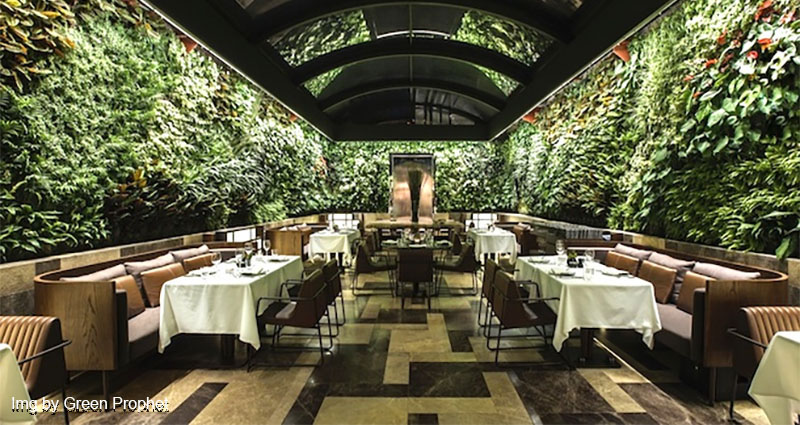When it comes to interior design, nothing is more important than colour. The right colour palette can turn even the most boring room into an exciting space. Whether you’re redesigning your home or planning a new build, choosing the perfect colours will give your space a distinctive look and feel. There are so many factors that need to be considered when coming up with a colour scheme for your home or office. Are you designing on a budget? Do you want something neutral and understated, or are bolder, more dramatic hues more your style? It’s also important to think about whether this will be a temporary measure or a long-term renovation. With that in mind, here’s everything you need to know about colour palettes from the Dawnvale– whether they’re trending at the moment, or something that will stand the test of time.
Which Colour Palettes are Currently Trending?
There are no hard and fast rules when it comes to interior design, but some colour palettes are more popular than others at different times. When choosing the right hue for your home, the key is to select the right balance of colours – so you don’t go overboard and end up with a room that looks like a psychedelic rainbow. There are some colour trends that have become so popular they’ve almost become part of the interior design canon. These include:
- Green is a soothing and relaxing colour that is also associated with creativity and growth. It’s a great choice for bedrooms and living rooms, and can also be used in an office space.
- Blue is thought to be a calming and soothing colour, which makes it perfect for bedrooms and living rooms. It can also be used in office spaces, as long as it’s not too dark.
- Orange is a bold and vibrant colour that is often associated with creativity and adventure. It’s a great choice for a kitchen and dining room, and can also be used in a living room.
Timeless And Evergreen Colour Palettes
When choosing a colour palette for your home, you’ll want to choose a colour scheme that will stand the test of time, so that your room remains effortless. If you’ve ever visited a historic building, you’ll know that the colours used in the interior are often the same ones we use in our own homes today. These colour palettes have been popular for decades, and they’re still used in commercial and residential design projects across the world. They’re perfect for people who are looking for a long-term renovation, and want their home to retain its look and feel for years to come. These colour palettes are neutral and timeless, meaning they can be paired with almost any furniture style or design trend. They’re also ideal for people who don’t have a strong artistic leaning, as they’re not as bold as other colour palettes.
- Beige is a classic colour that is both understated and elegant. It’s perfect for living rooms and bedrooms, and can also be used in a dining room or kitchen.
- Grey is another colour that is understated and elegant. It’s perfect for bedrooms, living rooms, and offices, and can also be used in a dining room or kitchen.
- Brown is a warm and earthy colour that is perfect for living rooms and bedrooms, and can also be used in a dining room or kitchen.
- Blue is a cool and calming colour that is perfect for bedrooms, living rooms, and offices, and can also be used in a dining room or kitchen.
- Green is a warm and welcoming colour that is perfect for most spaces, particularly due to the versatility of tones available.
Neutral Colours for a Simplified Design
While some colour palettes are more evergreen than others, others are more transient. If you’re looking to simplify your design, but don’t want to go with an evergreen colour palette, then a neutral design is the way to go. For as long as humans have been building, white has been the colour of choice for walls. White walls are the easiest way to create an open and airy feel in a room, and they work with any style from minimalist to maximalist. White walls work particularly well in minimalist design schemes because they don’t distract from the other design elements in the space. But white isn’t just for minimalist interiors; it can also be used in more maximalist designs as an accent colour to create a minimalist look. Other neutral colours that are great for minimalist design include black, grey, cream, and beige. These colours allow you to keep your design simple and uncluttered, while still making a bold statement. They’re also perfect for people who don’t have a lot of time or energy to spend colour coordinating their home.
Light and Bright Colours for a Cheerful Environment
For some people, a minimalist approach isn’t enough; they want bold, bright, and colourful. For these people, a light-coloured interior design is the way to go. These designs are often cheery and playful, and they add a sense of fun and whimsy to your home. These schemes work particularly well in children’s bedrooms, playrooms, and offices, but can also be used in a kitchen or dining room. Colours that are associated with light and bright designs include yellow, blue, and orange. These colours are bold, bright, and energetic, and they can be used as wall colours, or as accents in a room. These colours are very popular in commercial and residential designs, and they’re also a great choice for people who want to inject a fun, youthful, and energetic vibe into their home.
Dark and Dramatic Colours for an Intimate Feel
Sometimes, you want to create a more intimate and dramatic look, and these types of colour palettes are perfect for these kinds of interior designs. These schemes often use darker, moodier colours that create a rich and decadent feel. These schemes are perfect for people who want to create a sophisticated and luxurious look in their home, although they may be a little overkill for a kids’ bedroom. Colours that are associated with dramatic and intimate designs include brown, red, and purple. These colours are rich, dramatic, and sophisticated, and they’re often used in high-end commercial and residential designs. These colours are often used as accents in a room, or as wall coverings, and they’re a great choice for people who want to create a luxurious and decadent interior design.
Bottom Line
When it comes to interior design, nothing is more important than colour. The right colour palette can turn even the most boring room into an exciting space. Whether you’re redesigning your home or planning a new build, choosing the perfect colours will give your space a distinctive look and feel. There are so many factors that need to be considered when coming up with a colour scheme for your home or office. With that in mind, we hope that we’ve covered everything you need to know about colour palettes – whether they’re trending at the moment, or something that will stand the test of time.









